
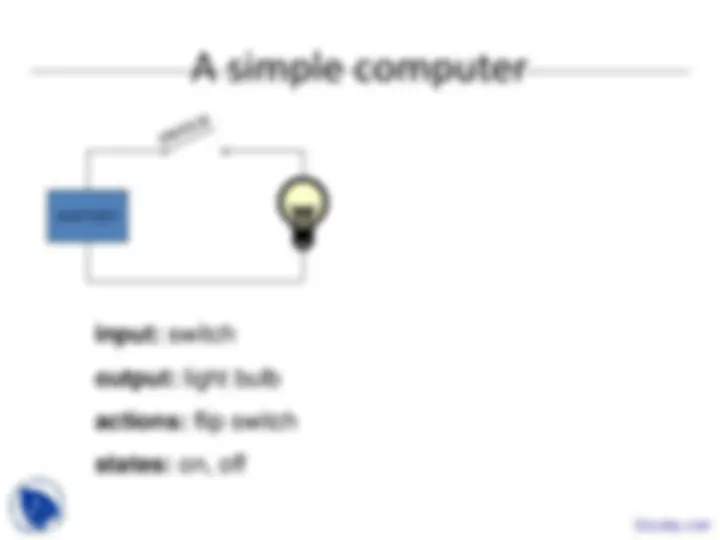
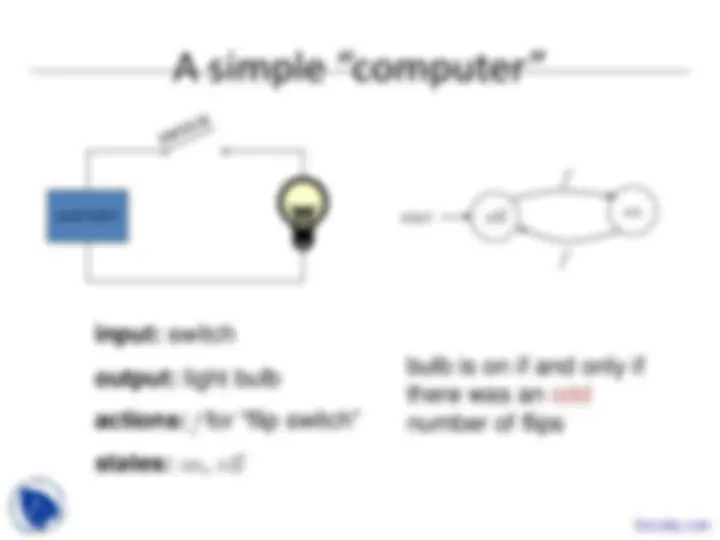
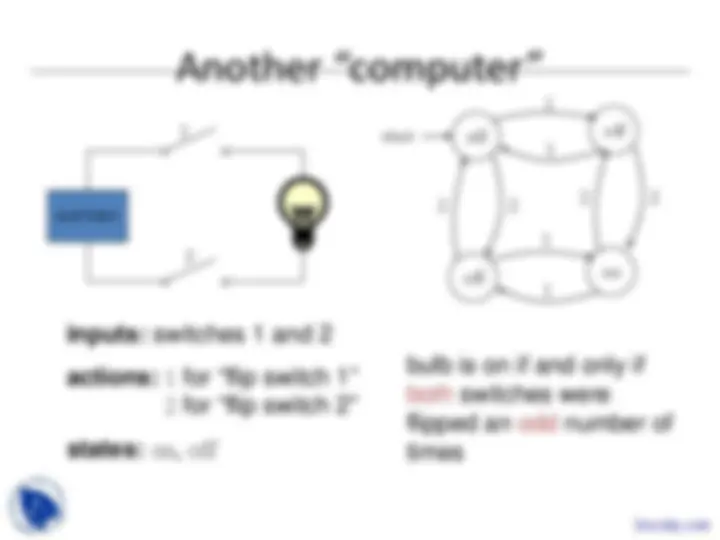
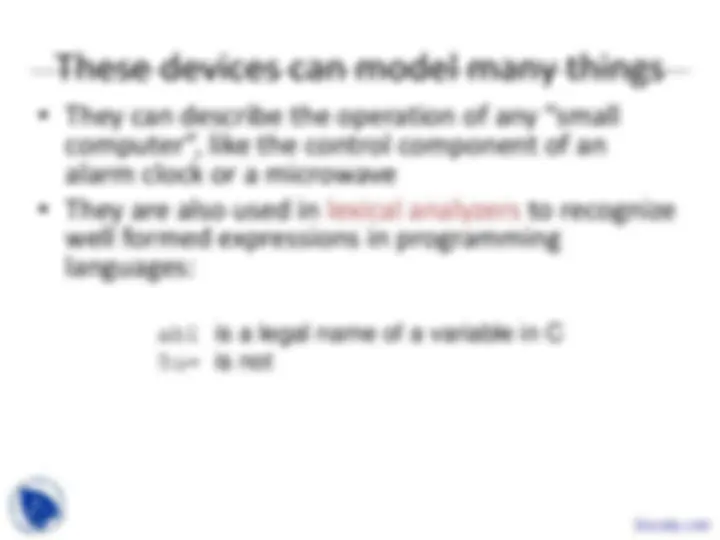
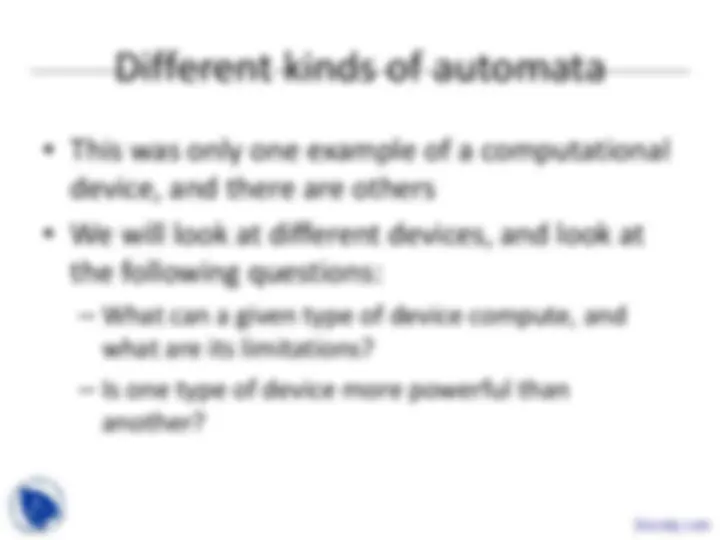
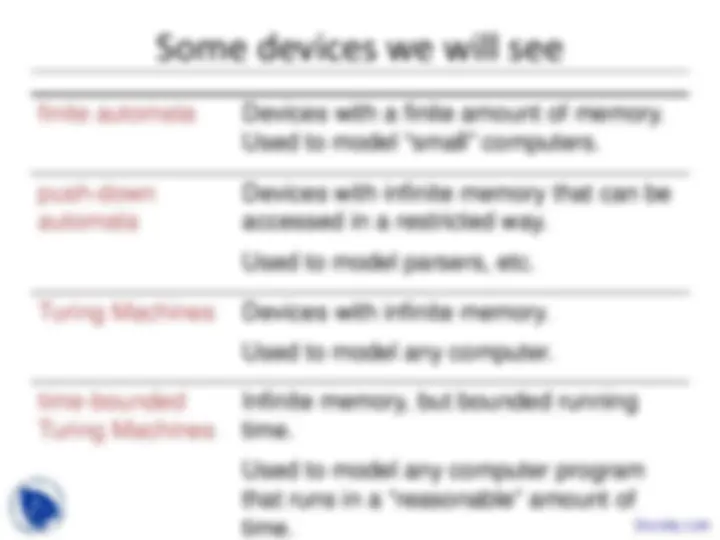
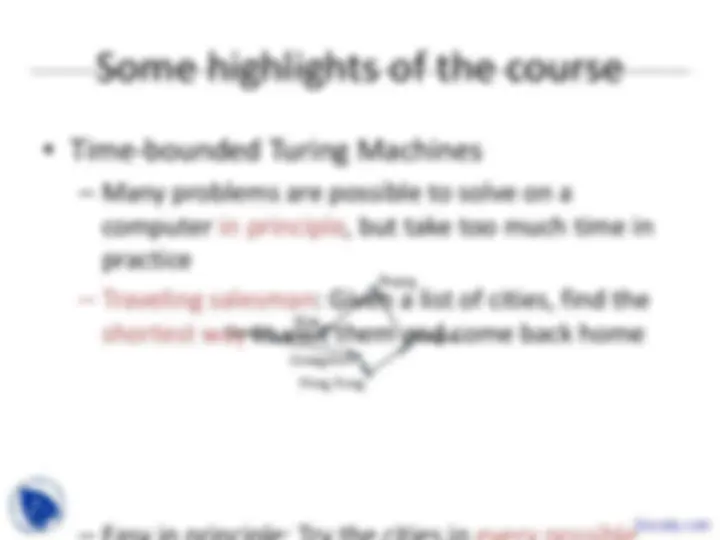
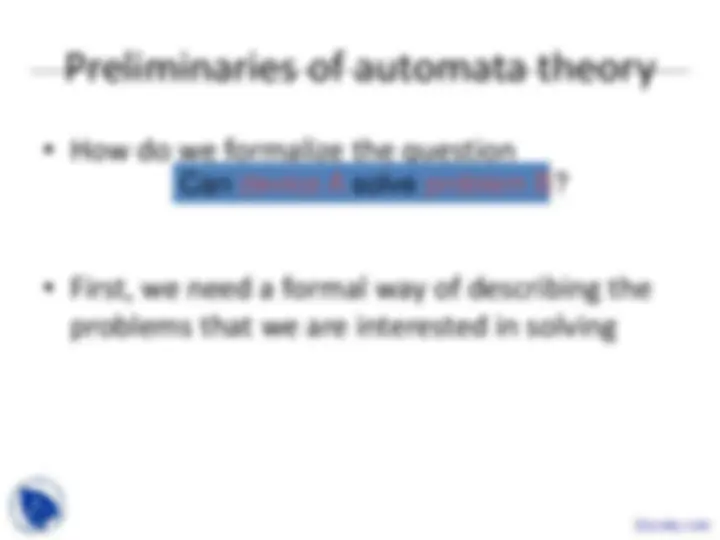
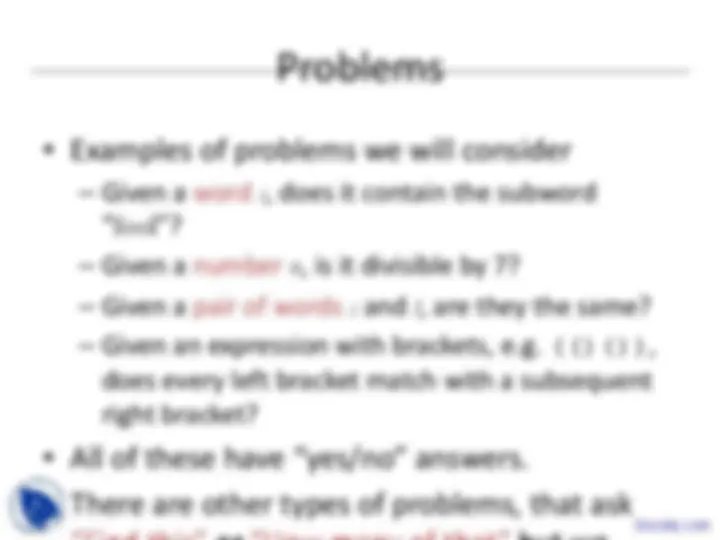
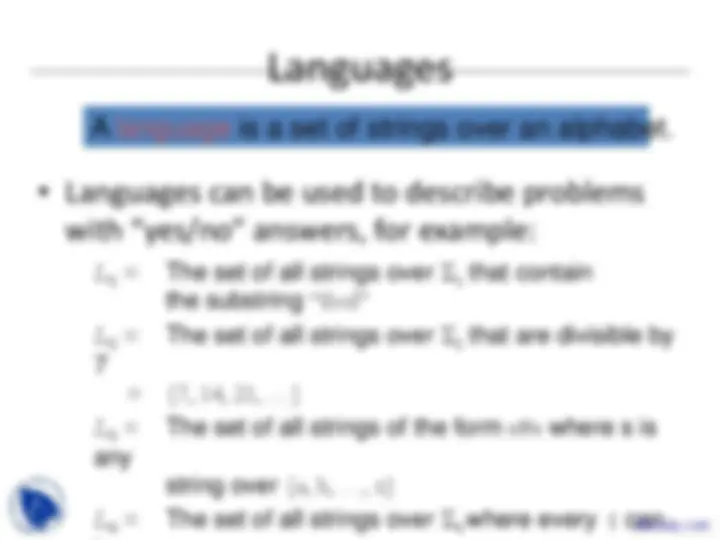
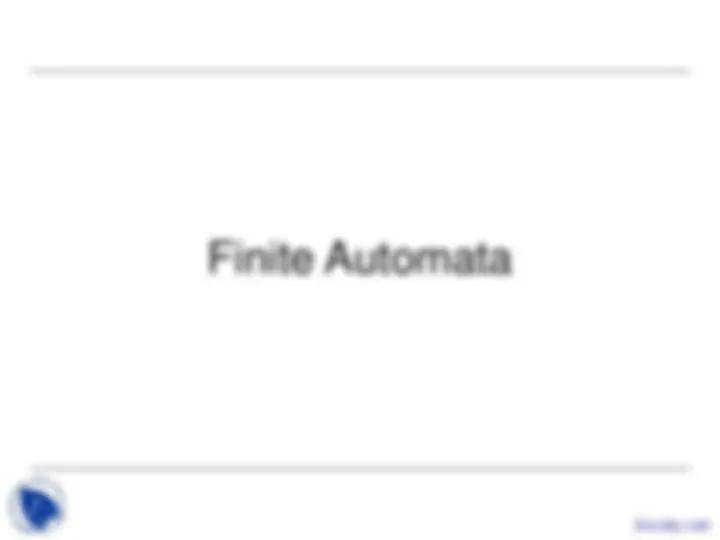
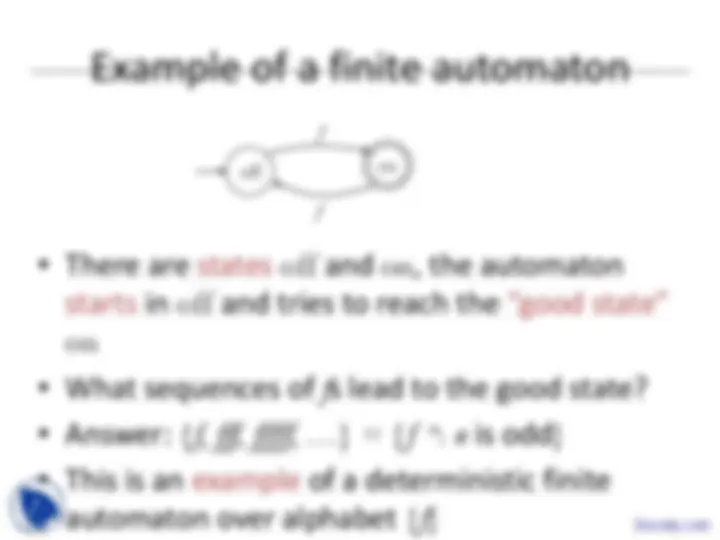
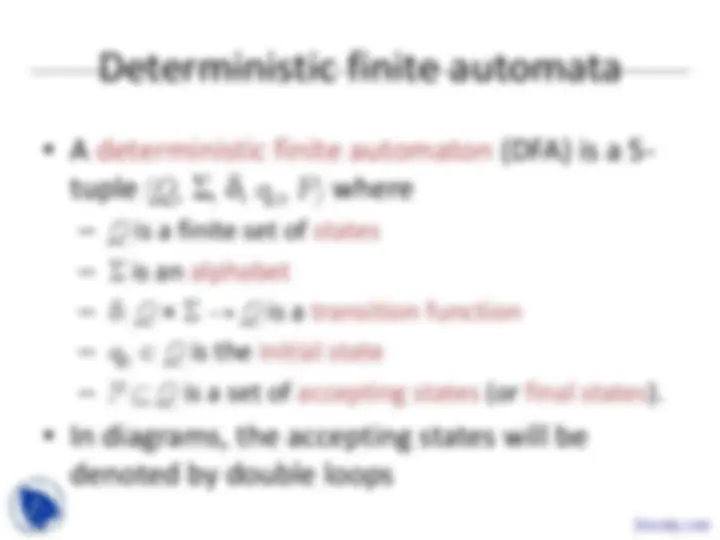
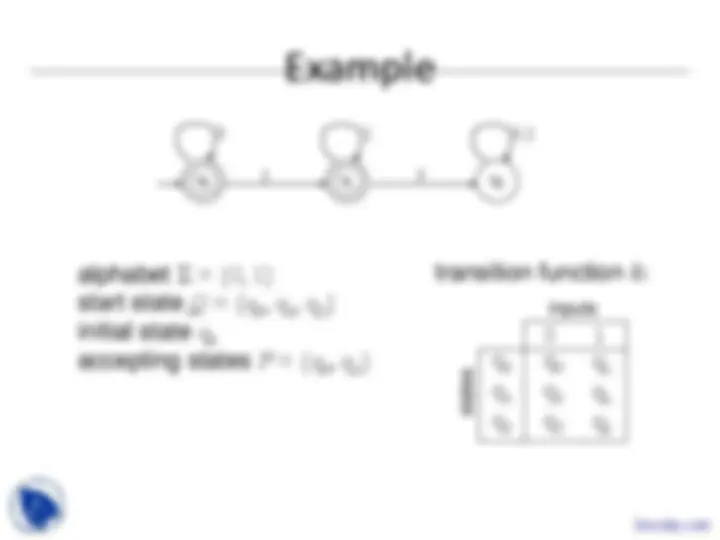
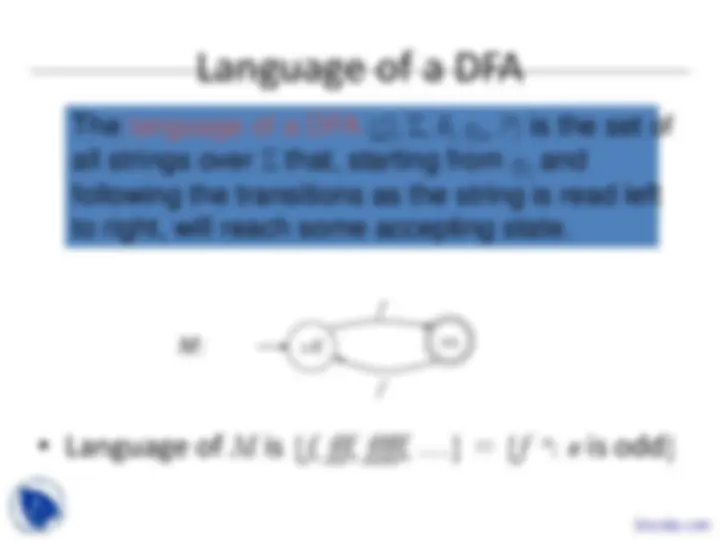
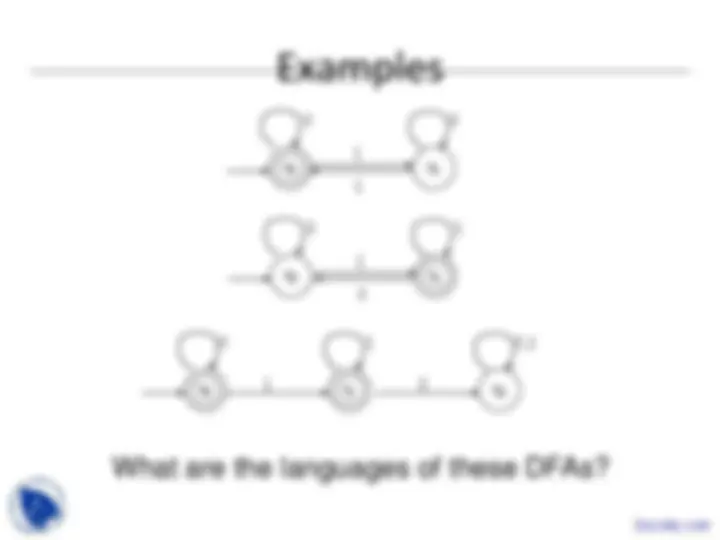
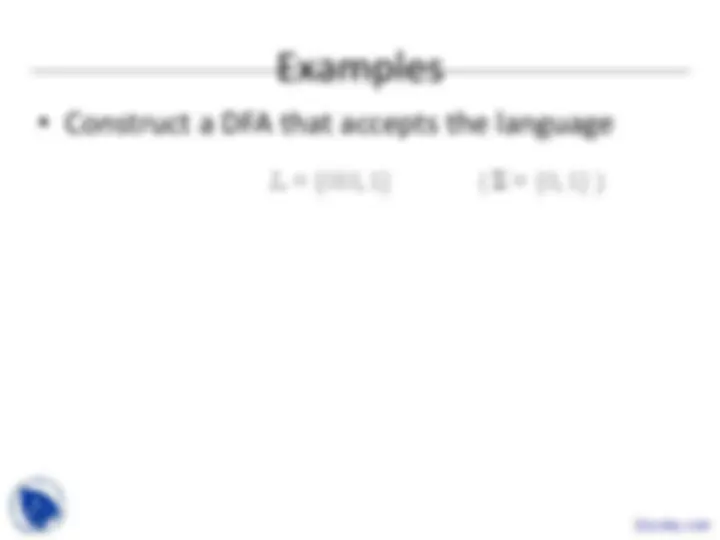
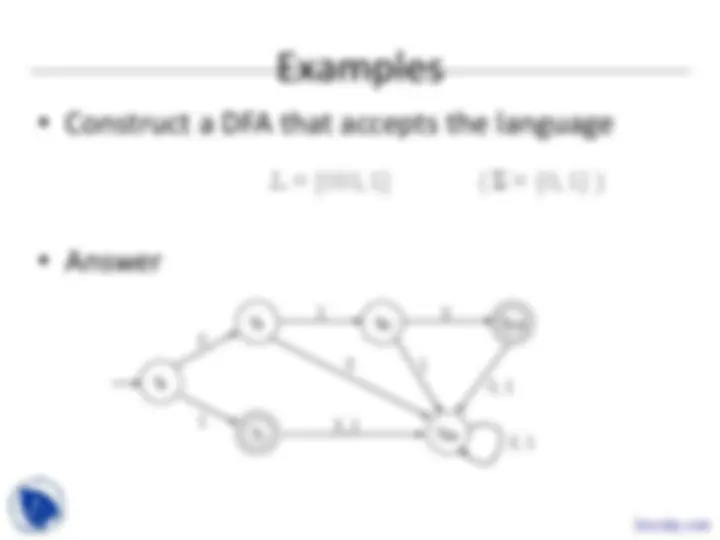
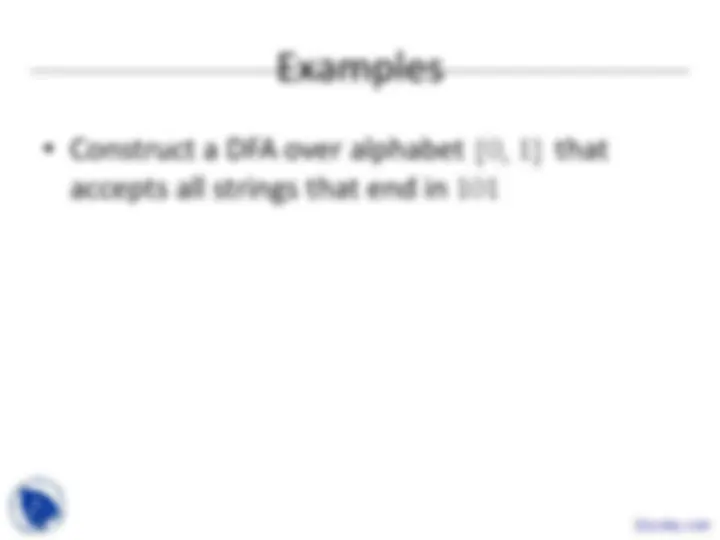
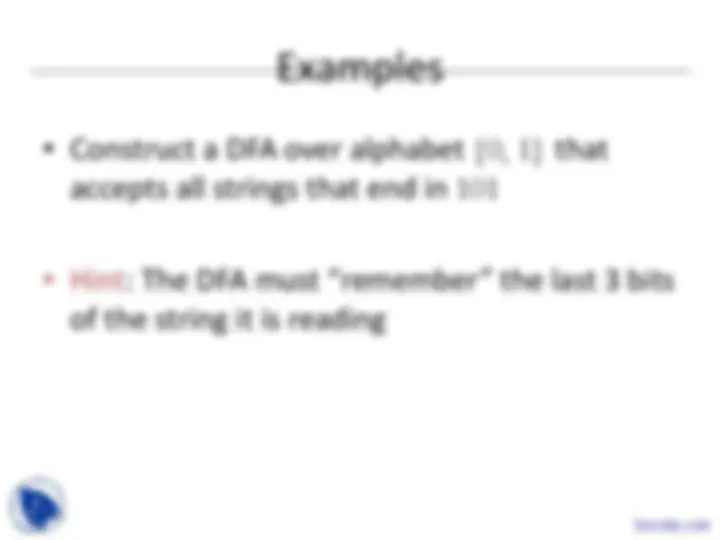



Study with the several resources on Docsity

Earn points by helping other students or get them with a premium plan


Prepare for your exams
Study with the several resources on Docsity

Earn points to download
Earn points by helping other students or get them with a premium plan
Community
Ask the community for help and clear up your study doubts
Discover the best universities in your country according to Docsity users
Free resources
Download our free guides on studying techniques, anxiety management strategies, and thesis advice from Docsity tutors
Some concept of Automata and Complexity Theory are Administrivia, Closure Properties, Context-Free Grammars, Decision Properties, Deterministic Finite Automata, Intractable Problems, More Undecidable Problems. Main points of this lecture are: Automata, Formal Languages, Computational Devices, Abstract, Computations, Abstract Devices, Automata Theory, Computations, Cell Phone, Abstract Models
Typology: Slides
1 / 29

This page cannot be seen from the preview
Don't miss anything!






















BATTERY (^) start off on
f
f
input: switch
output: light bulb actions: f for “flip switch” states: on, off
bulb is on if and only if there was an odd number of flips
BATTERY
start off off
1
inputs: switches 1 and 2 actions: 1 for “flip switch 1” actions: 2 for “flip switch 2”
states: on, off
bulb is on if and only if both switches were flipped an odd number of times
1
2
1
off on
1
1
2 2 2 2
These devices can model many things
ab1 is a legal name of a variable in C 5u= is not
Some devices we will see
finite automata Devices with a finite amount of memory. Used to model “small” computers.
push-down automata
Devices with infinite memory that can be accessed in a restricted way. Used to model parsers, etc.
Turing Machines Devices with infinite memory.
Used to model any computer.
time-bounded Turing Machines
Infinite memory, but bounded running time. Used to model any computer program that runs in a “reasonable” amount of time. Docsity.com
Hong Kong
Beijing
Shanghai
Xian Guangzhou
Chengdu
Σ 1 = {a, b, c, d, …, z}: the set of letters in English Σ 2 = {0, 1, …, 9}: the set of (base 10) digits Σ 3 = {a, b, …, z, #}: the set of letters plus the special symbol # Σ 4 = {(, )}: the set of open and closed brackets
abfbz is a string over Σ 1 = {a, b, c, d, …, z} 9021 is a string over Σ 2 = {0, 1, …, 9} ab#bc is a string over Σ 3 = {a, b, …, z, #} ))()(() is a string over Σ 4 = {(, )}
off on
f
f